About Willi Smith
Alexandra Cunningham Cameron
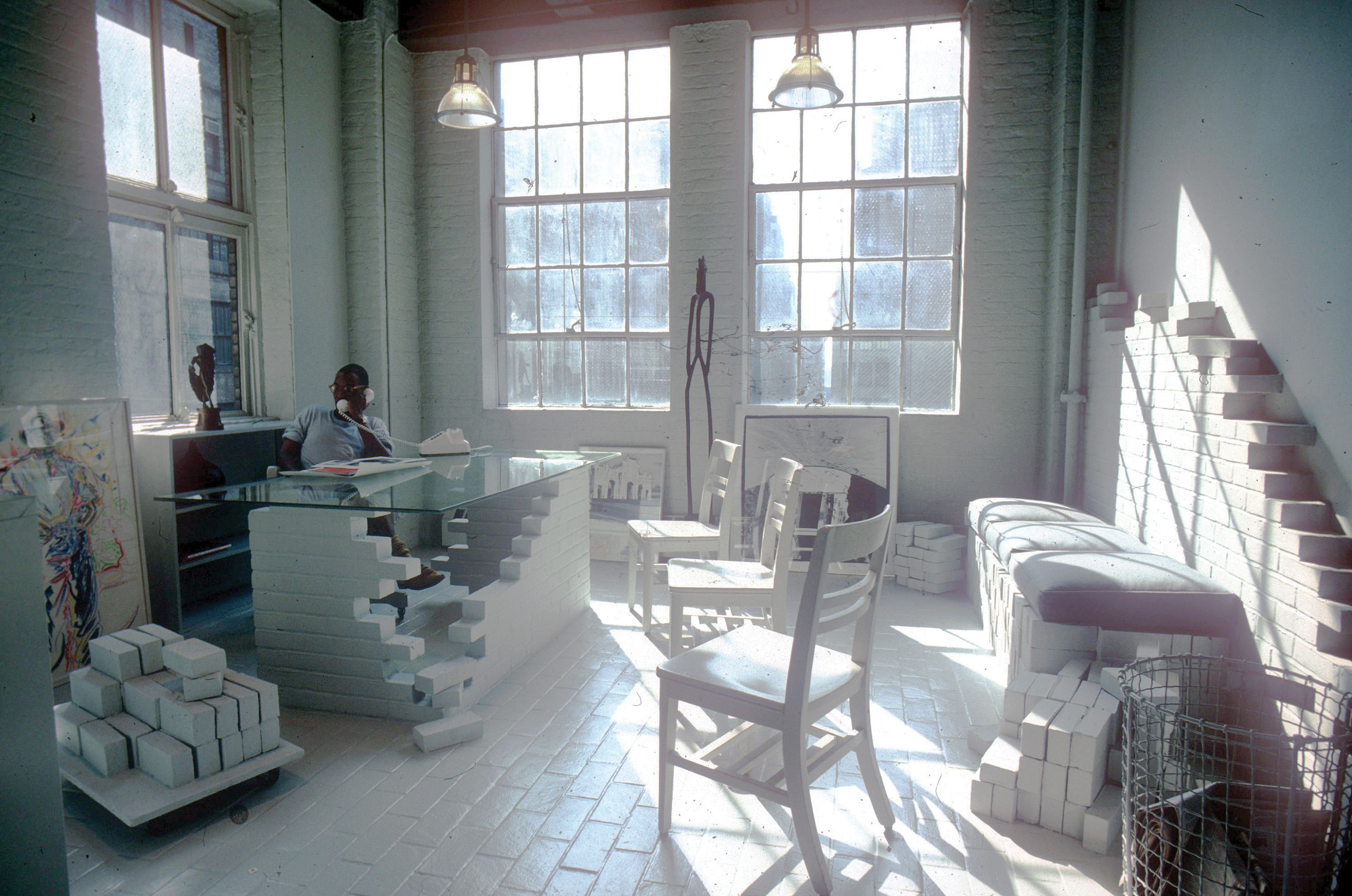
SITE for WilliWear, Willi Smith’s Office, New York, NY, 1982
In the fall of 2018, I happened upon a series of drawings and photographs in the SITE1 archive depicting monochrome middle-gray spaces collaged with cinderblock, chain-link fencing, park benches, and boardwalk. Nude models draped their bodies from pipes and scaled fences hangered with boxy ochre jackets, sewing patterns, and vibrant parachute pants. Part street bazaar, part boudoir, part dungeon, this striking synthesis of the degradation and ebullience I associated with a bygone New York was mirrored in an image of a bespectacled man speaking on a white rotary phone. He reclined confidently behind a desk of crumbling bricks, flanked by a Senufo standing figure from the Ivory Coast, West Africa, a Harvey Boyd illustration, and a collage from Christo and Jeanne-Claude’s Puerta de Alcalá, Wrapped project for Madrid. “That’s Willi Smith,” James Wines, SITE’s remaining partner told me. “He invented streetwear!” He then spent an hour recounting Smith’s visionary rise to prominence in the seventies and eighties.
It soon became apparent that Smith’s lack of institutional recognition sat in stark contrast with the extensive influence of his career arc on generations of designers and the public. Telling the story of this charismatic innovator would be necessary to understanding the wider circumstance of design now, and to supplementing a fashion canon that continues to privilege affluent, binary, eurocentric points of view. In the present day, when streetwear is a household word, the marriage of fashion and contemporary art has become dosed with cynicism , and gender-fluid collections are verging on mainstream, it can be hard to believe there was a time before, when the methods Smith initiated were virtually unheard of. What led this talented designer to build an accessible clothing label sold off the rack from Bloomingdale’s to Macy’s while simultaneously engaging with many of the most experimental artists of his time?

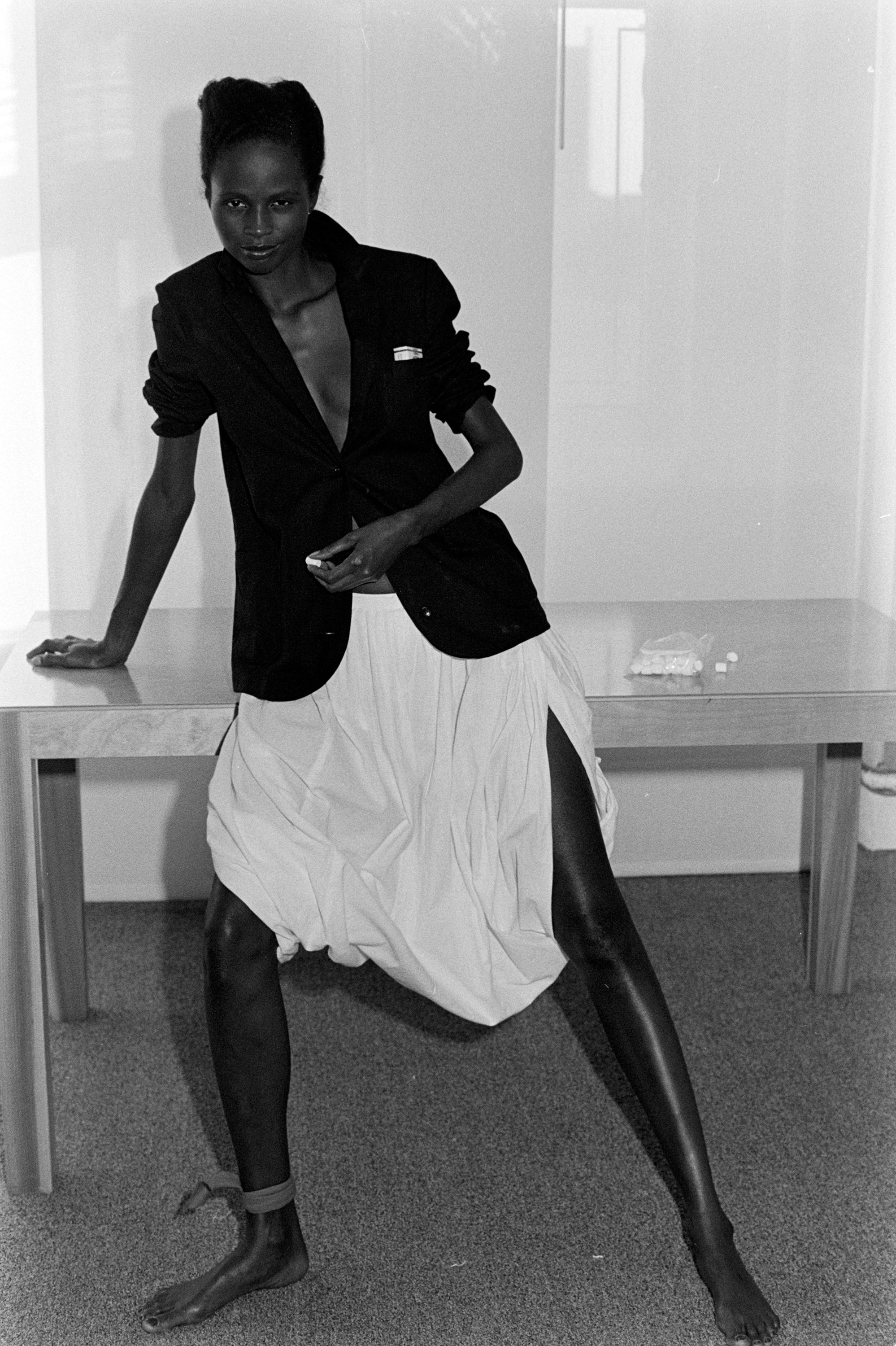
“I was Mr. Bookworm. I was the artistic child no one understood. But my parents supported me. If I was doing a little drawing, my father didn’t say, ‘Why don’t you play baseball?’. . . The family sometimes used to say there were more clothes in the house than food.”
So we got to work, shepherded by Smith’s former business partner Laurie Mallet, his remaining family members Doris J. Anderson, Toukie Smith, Norman Smith Harllee, and Alma I. Luna, and many generous friends and collaborators including Bjorn Amelan, Corice Arman, Jeffrey Banks, Anthony Barboza, Martine Barrat, Alvin Bell, Bill Bonnell, Mark Bozek, Stephen Burrows, Christo, Ricky Clifton, Bethann Hardison, Kim Hastreiter, Bill T. Jones, Veronica Jones, Maira Kalman, Stuart Lazar, David C. Levy, Les Levine, Fern Mallis, Linda Mason, Carlo McCormick, Dianne McIntyre, Peter McQuaid, Steven Meisel, Miralda, Richard Pandiscio, Rosemary Peck, Robert Risko, Edwin Schlossberg, Todd Siler, Alison Sky, Audrey Smaltz, Jorge Socarras, Jeff Tweedy, Max Vadukul, Sylvia Waters, Veronica Webb, and James and Suzan Wines.
Born in 1948, Willi Smith grew up in Philadelphia with an ironworker father and a mother skilled in the creative arts. “I was Mr. Bookworm. I was the artistic child no one understood. But my parents supported me. If I was doing a little drawing, my father didn’t say, ‘Why don’t you play baseball?’... The family sometimes used to say there were more clothes in the house than food.”2 After his parents divorced, Smith’s grandmother, Gladys “Nana” Bush, stepped in to nurture him, a role she played throughout his life.
Born in 1948, Willi Smith grew up in Philadelphia with an ironworker father and a mother skilled in the creative arts. “I was Mr. Bookworm. I was the artistic child no one understood. But my parents supported me. If I was doing a little drawing, my father didn’t say, ‘Why don’t you play baseball?’... The family sometimes used to say there were more clothes in the house than food.”2 After his parents divorced, Smith’s grandmother, Gladys “Nana” Bush, stepped in to nurture him, a role she played throughout his life.
 Willi Smith for WilliWear, WilliWear Leaving Home, Spring 1982
Collection, Photographed by Steven Meisel, 1981
Willi Smith for WilliWear, WilliWear Leaving Home, Spring 1982
Collection, Photographed by Steven Meisel, 1981“I’m trying to strip my clothes of nostalgia, of age, of everything that isn’t practical.”
Smith studied commercial art at Mastbaum Technical High School and fashion illustration at the Philadelphia Museum College of Art. He found himself bored by the limits of illustration, always “changing the design of the dress [he] was supposed to be illustrating.”3 Through the connections of a family for whom she cleaned, Bush organized an internship for Smith with venerated couturier Arnold Scaasi. At Scaasi, Smith assisted in creating fashions for clientele like Brooke Astor and Elizabeth Taylor, learning form, fit, embroidery, and the power wielded by access to a certain type of dress—a crash course in elite levels of fashion and “the clothes [he] didn’t want to make,” as he later described it.4
In 1965, Smith left Philadelphia for Parsons School of Design in New York City. David C. Levy, former executive dean and CEO of Parsons, recalls the day Smith interviewed for admission. Levy served as director of admissions at the time, and his assistant, Carmela Hedger Lembo, processed Smith’s interview: “I remember this very well, because she was so flabbergasted by the quality of his work that she burst into my office after he left to tell me about it and him. She believed he was the most talented fashion-design applicant she had ever seen.”5
At Parsons, Smith was being groomed to follow fashion’s rules of engagement while New York City careened toward bankruptcy. Smith’s downtown overflowed with artists across disciplines forging a radically experimental culture amidst the failing infrastructure and disintegrating postwar moral strictures. So when, in 1967, the legendary chair of the Fashion Design Department, Ann Keagy, expelled Smith, allegedly for having an open affair with another male student, he was shaken by the rejection from the establishment but emboldened by the teeming life bubbling up from below 14th Street to strike out on his own. That same year, impresario Harrison Rivera-Terreaux introduced Smith to French artists Christo and Jeanne-Claude to help with the construction of a wedding dress. The completed work consisted of a formfitting white satin singlet, reminiscent of a late nineteenth-century undergarment, boxing uniform, or swimming costume, accessorized with a macramé yoke braided across the bride’s chest to haul a train of voluminous wrapped forms, bulging like packed laundry bags. The Wedding Dress defied boundaries between fashion and art, fashion and clothing, and sculpture and performance, and was exhibited in The Museum of Merchandise exhibition at the Young Men’s Hebrew Association (YMHA) in Philadelphia. Fourth in a rapid succession of shows presenting artist-designed fashion, jewelry, furniture, and decor intended for mass production, The Museum of Merchandise included works by artists who were bringing the aesthetics of mass culture into the fine-art world, among them Andy Warhol, Robert Indiana, Arman, and Roy Lichtenstein. The exhibition modeled the potential for elite contexts to open up to a wide commercial audience through cross-disciplinary engagement—a playbook Smith would soon adopt for his own work.
In 1965, Smith left Philadelphia for Parsons School of Design in New York City. David C. Levy, former executive dean and CEO of Parsons, recalls the day Smith interviewed for admission. Levy served as director of admissions at the time, and his assistant, Carmela Hedger Lembo, processed Smith’s interview: “I remember this very well, because she was so flabbergasted by the quality of his work that she burst into my office after he left to tell me about it and him. She believed he was the most talented fashion-design applicant she had ever seen.”5
At Parsons, Smith was being groomed to follow fashion’s rules of engagement while New York City careened toward bankruptcy. Smith’s downtown overflowed with artists across disciplines forging a radically experimental culture amidst the failing infrastructure and disintegrating postwar moral strictures. So when, in 1967, the legendary chair of the Fashion Design Department, Ann Keagy, expelled Smith, allegedly for having an open affair with another male student, he was shaken by the rejection from the establishment but emboldened by the teeming life bubbling up from below 14th Street to strike out on his own. That same year, impresario Harrison Rivera-Terreaux introduced Smith to French artists Christo and Jeanne-Claude to help with the construction of a wedding dress. The completed work consisted of a formfitting white satin singlet, reminiscent of a late nineteenth-century undergarment, boxing uniform, or swimming costume, accessorized with a macramé yoke braided across the bride’s chest to haul a train of voluminous wrapped forms, bulging like packed laundry bags. The Wedding Dress defied boundaries between fashion and art, fashion and clothing, and sculpture and performance, and was exhibited in The Museum of Merchandise exhibition at the Young Men’s Hebrew Association (YMHA) in Philadelphia. Fourth in a rapid succession of shows presenting artist-designed fashion, jewelry, furniture, and decor intended for mass production, The Museum of Merchandise included works by artists who were bringing the aesthetics of mass culture into the fine-art world, among them Andy Warhol, Robert Indiana, Arman, and Roy Lichtenstein. The exhibition modeled the potential for elite contexts to open up to a wide commercial audience through cross-disciplinary engagement—a playbook Smith would soon adopt for his own work.
Smith’s charm and curiosity allowed him to move easily in this new art world but, rather than join the avant-garde, he forged ahead as a sportswear savant. Smith’s first significant post was lead designer at Digits, an upstart sportswear venture, where he displayed an affinity for workwear, tailored flight suits, and graphic patterns that belied his taste for pop art, British prep, and global destinations. He choreographed editorial shoots on the street with models laughing, arms locked Mary Tyler Moore–style, licking ice cream cones, or reclining against storefronts like primped grifters, a narrative link between the runway and the streets foreign to the Seventh Avenue garment mills of the seventies.
Meanwhile, American style was establishing itself abroad. Young designers such as Halston and Bill Blass began elevating sportswear through seamless silhouettes that caressed the body with jersey and chiffon instead of the embellished and opulent satin or velvet that stiffened classic offerings from Parisian haute couture houses. This clash between the two worlds of Paris and New York came to a head at the 1973 Battle of Versailles, a fashion show fundraiser produced by New York Fashion Week founder Eleanor Lambert that pitted leading French and U.S. designers against each other. The American designers’ relaxed airy fashions, Black models who danced down the runway, and theatrical presentation helped them to emerge as the uncontested winners, creating a power shift that opened the doors for new voices to claim a place in the market.
Smith became a poster boy for fresh American style. His signature slacks—an amalgam of zoot suit, navy dress, and Fred Astaire tux that moved like George Balanchine’s “cloud in trousers,”6 sold out repeatedly in department stores. He was nominated for industry awards and traveled the country on promotional tours. Yet all the while, Smith was frustrated by the lack of agency he was afforded working for an industry label and restlessly searched for creative outlets to capture the imagination of an audience that his name-brand colleagues did not court: everyone.
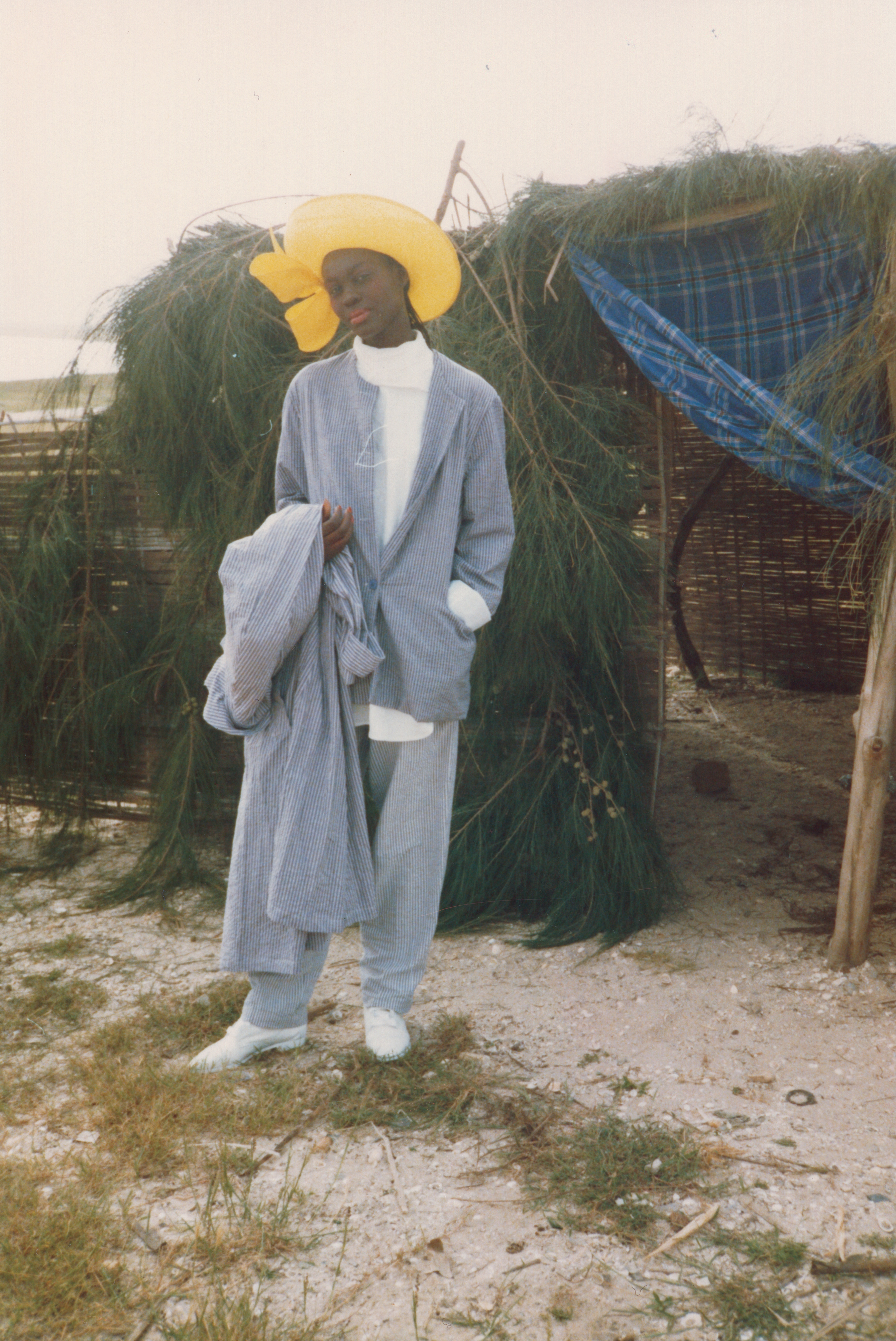
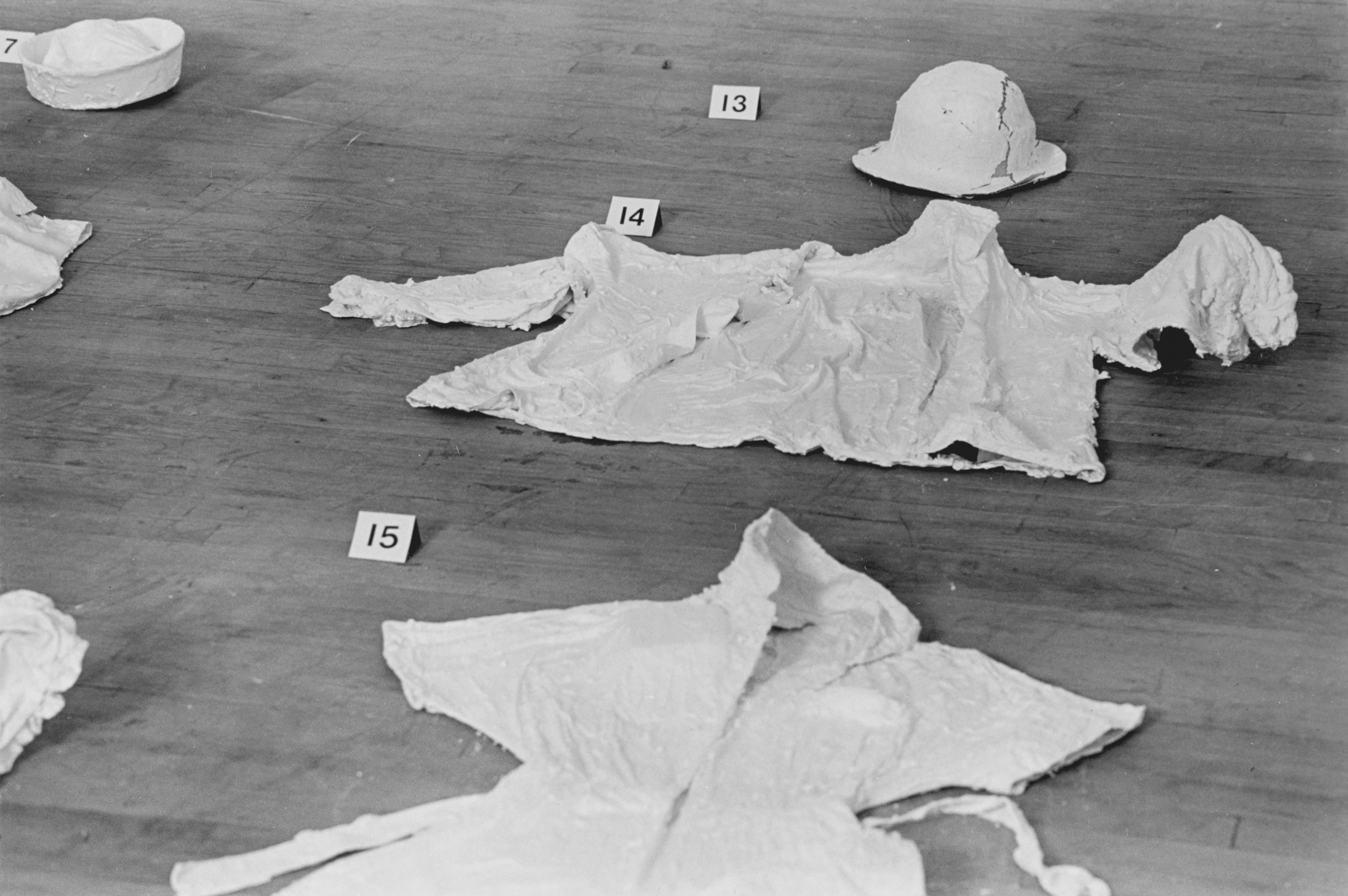
After Digits went bankrupt in 1974, Smith launched a false-start venture with his model sister, Toukie Smith and Rivera-Terreaux in a deal with a Seventh Avenue firm that bought his name yet gave him no creative control. He fought back, winning a suit to regain ownership over “Willi Smith Designs,” and reconnected with his former assistant at Digits, Laurie Mallet, who was selling imported tunics from India. At Mallet’s suggestion, they traveled to Bombay (now Mumbai) in 1976 and returned with a collection of four basic garments: jacket, shirt, skirt, and a high-waisted, loose-fitting pant dubbed the “WilliWear pant,” all constructed in the tunic factory from cotton poplin readily available on the Bombay textile market. Later that year, Smith and Mallet launched WilliWear Ltd.
WilliWear had parallels but no peers within the fashion system at the time. The brand was helmed by a celebrated personality, but the clothing was intentionally affordable; quality of materials, durability, and craftsmanship were paramount. However, WilliWear was equally committed to mass-market production; traditional sizing was created for ease of sale in department stores, yet the garments favored all manner of body types, one size often fitting many. Smith emphasized basic designs that served flexible lifestyles, acknowledging that his clientele wanted the freedom to move from “the bedroom to the beach”; and women’s and men’s designs were often interchangeable. “I’m trying to strip my clothes of nostalgia, of age, of everything that isn’t practical.”7 Each collection, while already affordable, was cut into patterns for Butterick and McCall’s so that home sewers could translate the silhouettes. Indeed, Smith delighted in the appropriation of his work, distancing himself from the fashion protocol of donning a complete ensemble from a particular designer. “My designs are so simple. . . . I want them to be interpreted. I’m not a statement designer, you don’t have to wear me from head to toe. I like thrift shoppers who put other things together creatively with my clothes.”8
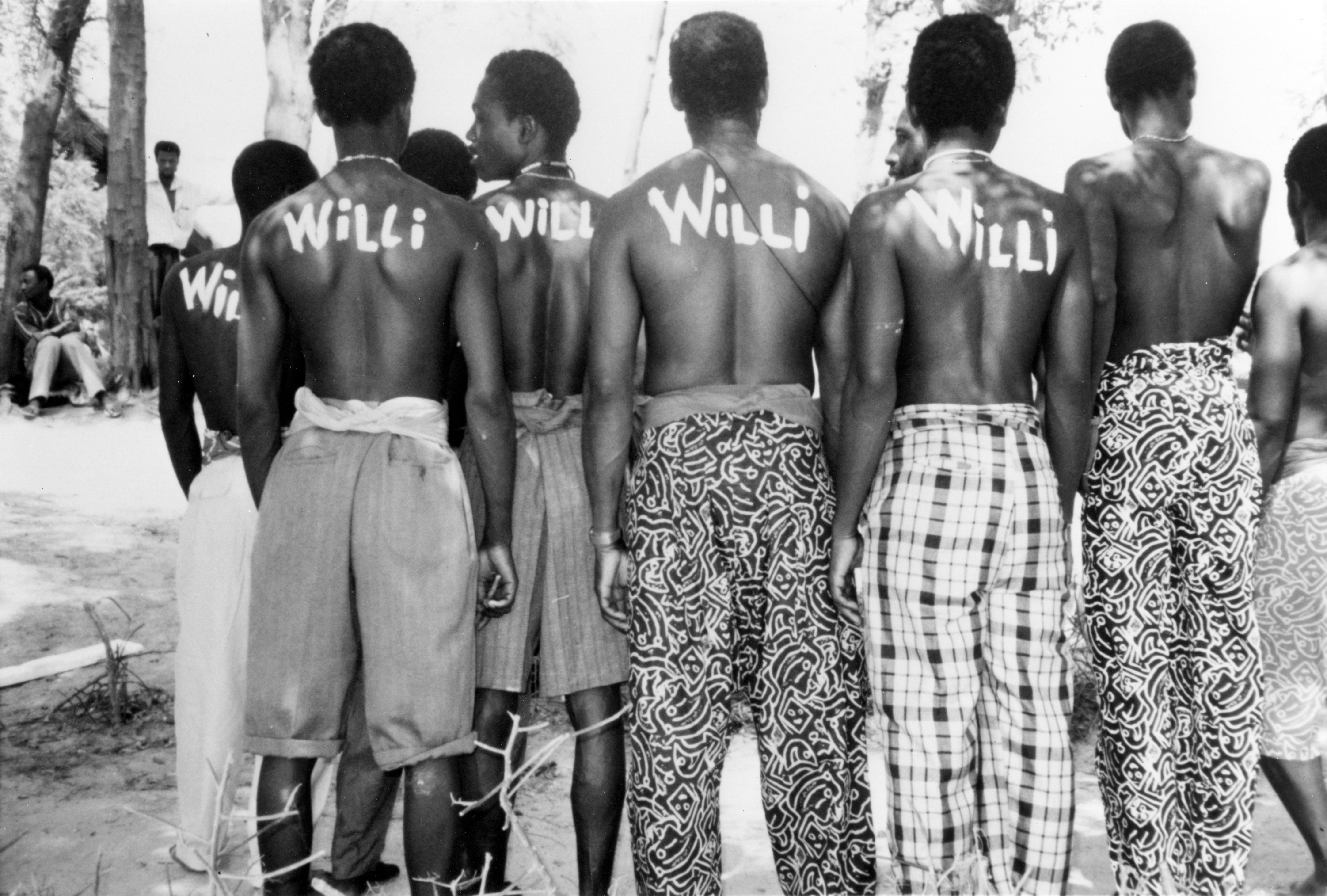 Theatre National Daniel Sorano Dancers on Set, Expedition, Willi Smith for WilliWear, Spring 1986 Collection,
Theatre National Daniel Sorano Dancers on Set, Expedition, Willi Smith for WilliWear, Spring 1986 Collection,
Photographed by Max Vadukul, Dakar, Senegal, 1985
Smith and Mallet exploded their startup into a commercial success with the attitude that everyday people deserved to be cultivated as connoisseurs, an equalizing agenda that rejected the unattainable luxury glamorized by the media at the time. “I’m not imposing any fantasy on anyone. . . . What’s the point if you can’t put the clothes anywhere in this world? Clothing should go hand in hand with society.”9 Smith understood that his empathic relationship to the people who wore his clothes, his equality of concern for affordability, functionality, and expressiveness, required new platforms to disseminate his vision beyond the cabal of editors, investors, and designers that ruled the industry.
In 1982, Smith formalized this objective by participating in a multidisciplinary program at Project Space One P.S. 1, now MoMA PS1), where he filled a stark schoolroom with a grid of white-plaster clothes laid out on the floor and flagged with evidence markers. Visitors were blocked from entering the room by a translucent-tulle scrim but could peer in from the doorframe holding red, yellow, and blue color cards to their faces. “I wanted to break away from the predictability of the way clothes are shown, to take them out of the realm of fashion,” Smith said. “Because clothes are usually seen three dimensionally, I wanted to use them flat. Because they’re usually seen in motion, I wanted them to be still.”10 The installation, whose title Art as Damaged Goods referenced the stamp retailers use when returning imperfect articles of clothing, simultaneously positioned Smith as an experimental artist, critiqued the fickle business of fashion, and formalized his basic garments, a wardrobe of “canvases for the body:”11 hat, blouse, playsuit, jumpsuit, bloomer, slipper, cap, top, shirt, pants, shorts, heel, smock, romper, sneaker.
“My designs are so simple . . . . I want them to be interpreted. I’m not a statement designer, you don’t have to wear me from head to toe. I like thrift shoppers who put other things together creatively with my clothes.”
Later that year, SITE’s WilliWear showroom opened on Seventh Avenue and 38th Street in the Garment District. Inspired by the aesthetic of the rough-and-ready Hudson River piers and designed by partners James Wines and Alison Sky for sales, events, and salons, the space was a temple to Smith’s inspiration—the spirited individuality and unapologetic stylings of people on the street, suburban women, and “gals with roller skates coming out of their ears.”12 This space shaped the public understanding of the brand, celebrating the vision of the designer, the creativity of the consumer, and the world in which they lived together through architectural expression.
WilliWear went on to stage surprising collaborations with artists who were anticipating social and technological shifts in society: video art pioneer Nam June Paik and techno-utopian Juan Downey created sets for runway shows; the groundbreaking experimentalist Les Levine devised a narrative film to launch WilliWear Productions’ artist T-shirts; choreographer Dianne McIntyre invited Smith to dress her dancers for several works interpreting Black experience; and the Bill T. Jones/Arnie Zane Dance Company staged Secret Pastures, for which Smith designed the costumes, Keith Haring made the set, and Peter Gordon composed the score. Rather than glorify Smith’s designs as exclusive and extravagant, these collaborations emphasized his clothing as one element of a grander story, something to be interpreted, used, and even discarded. The performance of the clothing in the world was what mattered. “I call my ready-to-wear designs ‘background clothes’; they let the person come through. They’re all-natural fibers, soft, unconstructed and not aligned to a particular season. But they need accent—a unique, individual mark.”13
WilliWear went on to stage surprising collaborations with artists who were anticipating social and technological shifts in society: video art pioneer Nam June Paik and techno-utopian Juan Downey created sets for runway shows; the groundbreaking experimentalist Les Levine devised a narrative film to launch WilliWear Productions’ artist T-shirts; choreographer Dianne McIntyre invited Smith to dress her dancers for several works interpreting Black experience; and the Bill T. Jones/Arnie Zane Dance Company staged Secret Pastures, for which Smith designed the costumes, Keith Haring made the set, and Peter Gordon composed the score. Rather than glorify Smith’s designs as exclusive and extravagant, these collaborations emphasized his clothing as one element of a grander story, something to be interpreted, used, and even discarded. The performance of the clothing in the world was what mattered. “I call my ready-to-wear designs ‘background clothes’; they let the person come through. They’re all-natural fibers, soft, unconstructed and not aligned to a particular season. But they need accent—a unique, individual mark.”13
The success of these collaborations, along with their exhilarating campaigns drafted by New Wave graphic designers, brought WilliWear to a wide and diverse audience; however, Smith’s practice embodied an inclusivity he himself was not afforded. Throughout his career, Smith was confronted by scrutiny of his own identity, facing criticism for being “so white”14 while simultaneously being pigeonholed by the monolithic view of Blackness endemic to both the fashion world and United States culture at large. Smith struggled to ignore the thin criticism of those questioning his solidarity with “the Black community” while searching for a way to redraw the erasure of African American identity in a manner suited to his own creative impulses.
Toward the end of 1985, Smith traveled to Senegal with Max Vadukul, Peter Gordon, Linda Mason, and Mark Bozek to produce a film for WilliWear’s spring 1986 collection. Smith told Vadukul that traveling to Dakar, Senegal’s major port of the transatlantic slave trade, was a way for him to discover his ancestry and begin to research a range of African aesthetics, something he had engaged with privately through his extensive collection of African art.15 Expedition cast Dakar locals and the Theatre National Daniel Sorano Dancers, following Smith’s formula of inviting dancers and everyday people to walk his runway.
Toward the end of 1985, Smith traveled to Senegal with Max Vadukul, Peter Gordon, Linda Mason, and Mark Bozek to produce a film for WilliWear’s spring 1986 collection. Smith told Vadukul that traveling to Dakar, Senegal’s major port of the transatlantic slave trade, was a way for him to discover his ancestry and begin to research a range of African aesthetics, something he had engaged with privately through his extensive collection of African art.15 Expedition cast Dakar locals and the Theatre National Daniel Sorano Dancers, following Smith’s formula of inviting dancers and everyday people to walk his runway.
“I wanted to break away from the predictability of the way clothes are shown, to take them out of the realm of fashion.”
Smith himself played various roles: customs officer, ship captain, cricket anchor, and hotel receptionist clad in pink dashiki and dhuku. The collection reflected the street style Smith encountered in Dakar: pastel tailored suits, pith helmets and sunbonnets, saturated wax prints, Malian bògòlanfini, and sinuous jewelry. The combination of classic European-American ensembles tied together with elements of dress native to the West African region encapsulated Smith’s ability to meld Western fashion with contexts outside that realm, something he experimented with throughout his career.
A year later, after a world tour of Expedition; after creating uniforms for Christo and Jeanne-Claude’s workers wrapping the Pont Neuf bridge in Paris; after launching his seminal spring summer 1988 Positive/Negative collection—Smith contracted shigella and pneumonia on a buying trip to India. He was hospitalized at Mount Sinai upon his return to New York. With his immune system ravaged by AIDS (a diagnosis he had ignored or suppressed like many gay men of his time who faced the public bigotry of admitting to carrying the untreatable disease), he died the next day, April 17, 1987. A memorial service was held at Parsons.
“I’m not imposing any fantasy on anyone . . . . What’s the point if you can’t put the clothes anywhere in this world? Clothing should go hand in hand with society.”
“I call my ready-to-wear designs ‘background clothes’; they let the person come through.”
The story of Smith’s life and work—his irrepressible combination of egalitarian ambition and radical experimentation—embodies the continued contradiction at the heart of American identity: that we are bound together in the common project of each other’s individualism. And yet despite this, despite Smith’s emphasis on clothes for the masses, his eschewal of elitism, his commercial success, and his mobilization of art to elevate the everyday, little has been done to preserve his history and formally document his undeniable influence. Only through the collective effort of Smith’s remaining community have we been able to construct a documented history of Willi Smith that will begin to serve future generations. This reliance on vernacular contributions and trust of narratives outside canonical registers is the only way that museums can begin to rectify the ongoing representation deficit of people of color in design and the visual arts—work that Cooper Hewitt, Smithsonian Design Museum and the Smithsonian network, along with many other museums, have taken up with vigor.
The essays, conversations, and recollections compiled here in Willi Smith: Street Couture invite various points of access into understanding Smith’s role as a catalyst for multidisciplinary collaboration, as a model for designers of color, as a queer icon, and as a friend and human being. Together, they begin to give shape to Smith’s broader artistic and humanitarian project of using design as a tool to divert power to the people. While no single book could do justice to the kaleidoscopic breadth of Smith’s influence, it is my hope that this collage of perspectives will provide a hint of the spirit that animated his oeuvre and carry forward his legacy of inclusivity, curiosity, and joy.
Alexandra Cunningham Cameron is the Curator of Contemporary Design and Edward and Helen Hintz Secretarial Scholar at Cooper Hewitt, Smithsonian Design Museum.
- Sculpture in the Environment (now known simply as SITE) was founded ca. 1970 by Alison Sky, James Wines, Michelle Stone, and Emilio Souza.
- “The Bright World of Willi Smith 1948–1987,” Women’s Wear Daily 152, no. 75 (April 20, 1987): 10.
- Joan Lebow, “Designer Profile: Willi Smith,” California Apparel News (January 1, 1982).
- “Willi Smith: Fashion Designer,” Daily News Magazine (September 7, 1986), The Black Fashion Museum Archival Collection, Archives of National Museum of African American History and Culture, Smithsonian Institution.
- David C. Levy, e-mail message to Julie Pastor, March 26, 2019.
- Arlene Croce, “Balanchine Said,” New Yorker (January 18, 2009).
- Ki Hackney, “Willi,” Women’s Wear Daily 124, no. 10 (January 14, 1972): 4–5.
- “Style 2,” SoHo News (February 23, 1982).
- Lebow, ibid.
-
WilliWear Ltd., “Art as Damaged Goods,” press release (January 1982).
- Gini Sikes, “Willi Wear It!” Metropolis (March 1985).
- On-ke Wilde, “Counter-Points by On-ke Wilde,” Women’s Wear Daily 138, no. 117 (June 19, 1979): 30.
- “Profile on People,” Fashion Accessories Magazine (June 1977).
-
Lynn Darling, “Let Them Wear Willi!” Esquire (December 1, 1984).
- The contributors to this book have verified through interviews, articles, and photographs that Smith avidly collected African art, but we have not been able to confirm the precise regions and cultures that created the numerous artworks in his collection. We regret that we are unable to credit them further in this publication.

